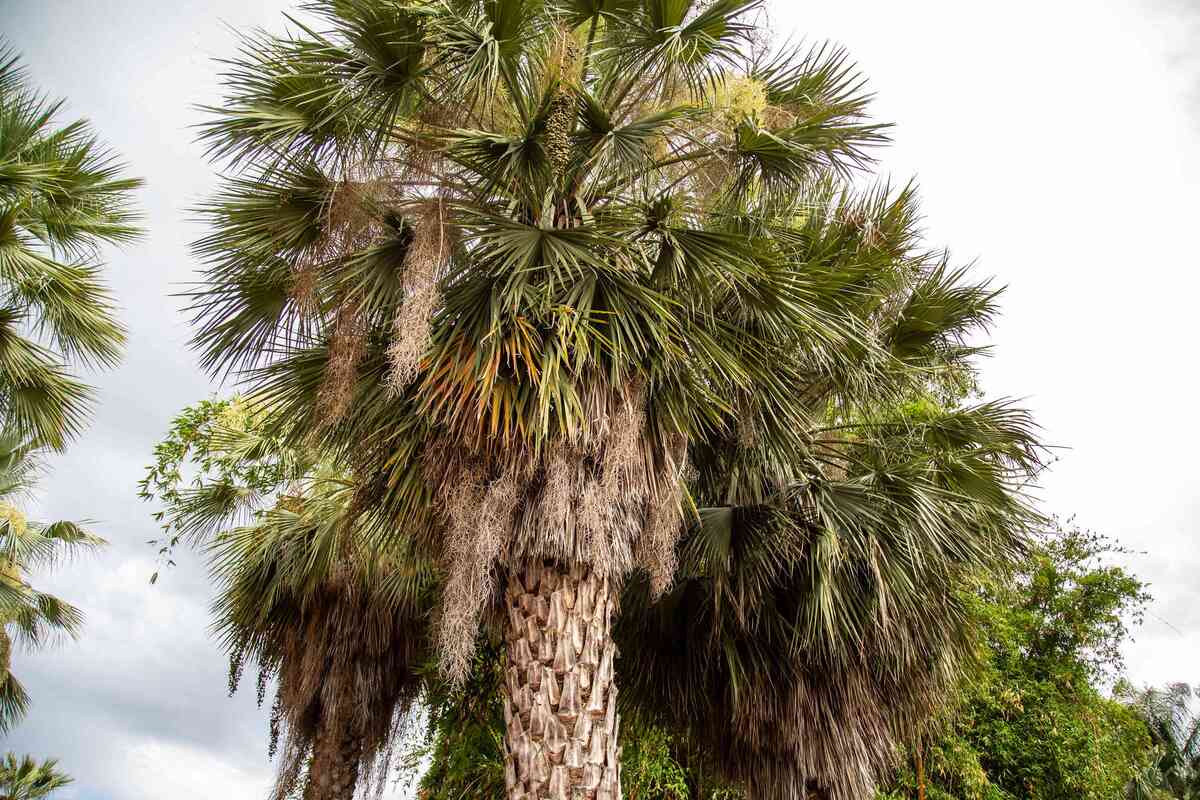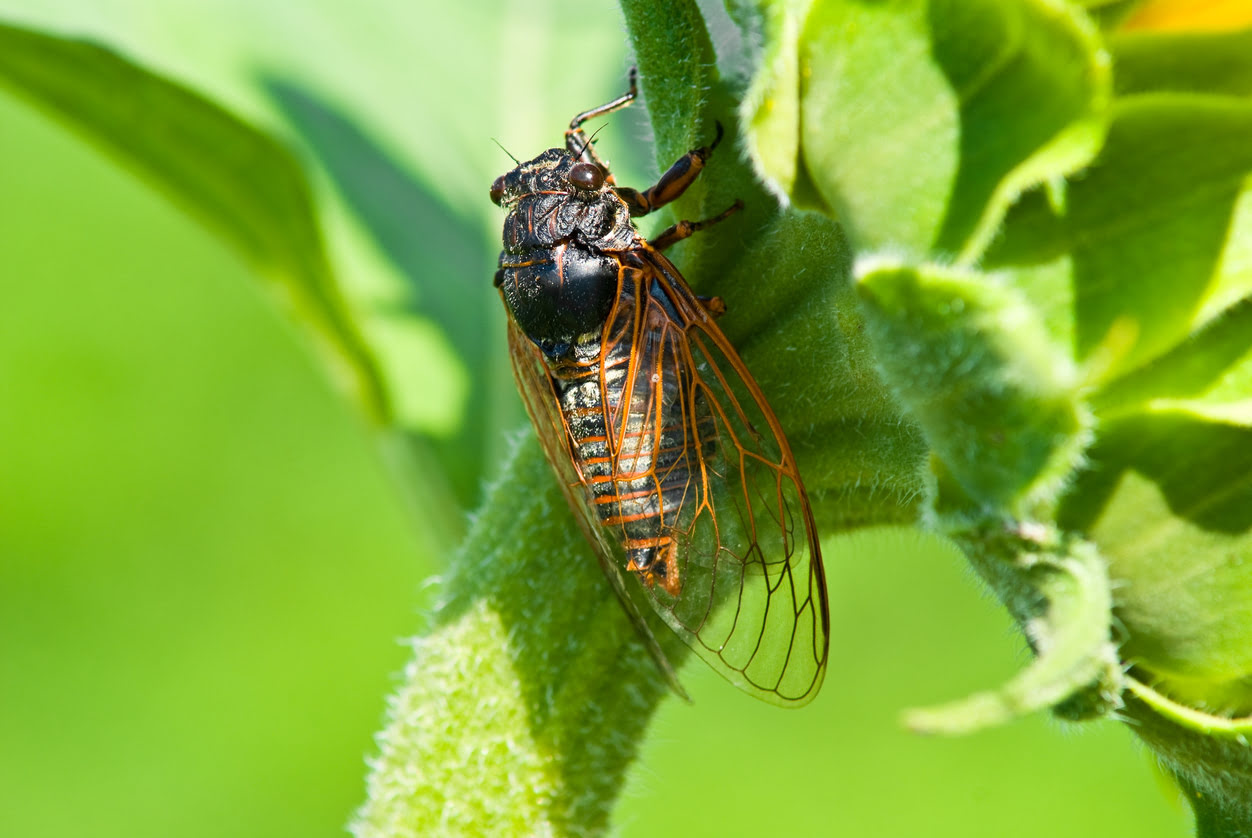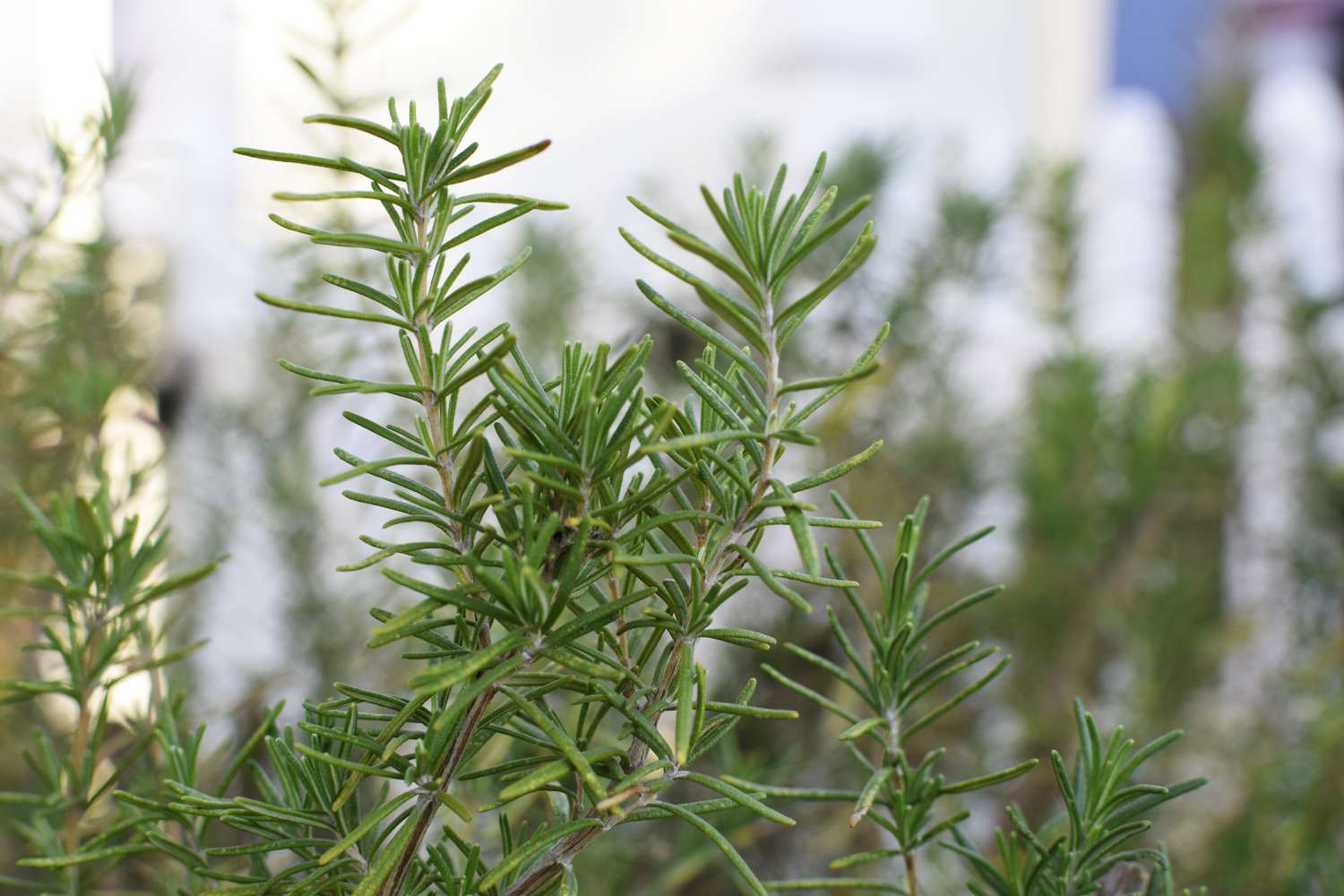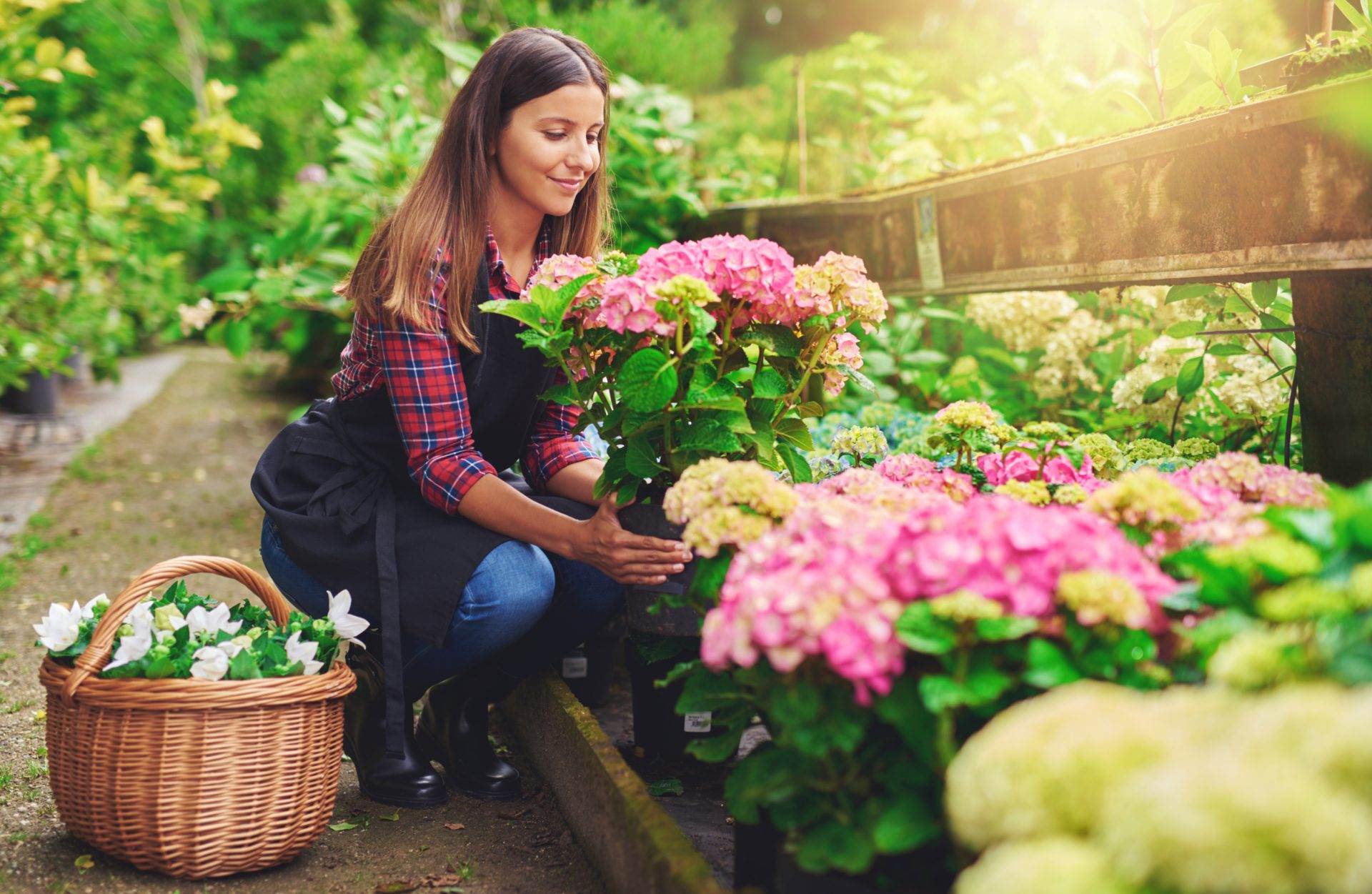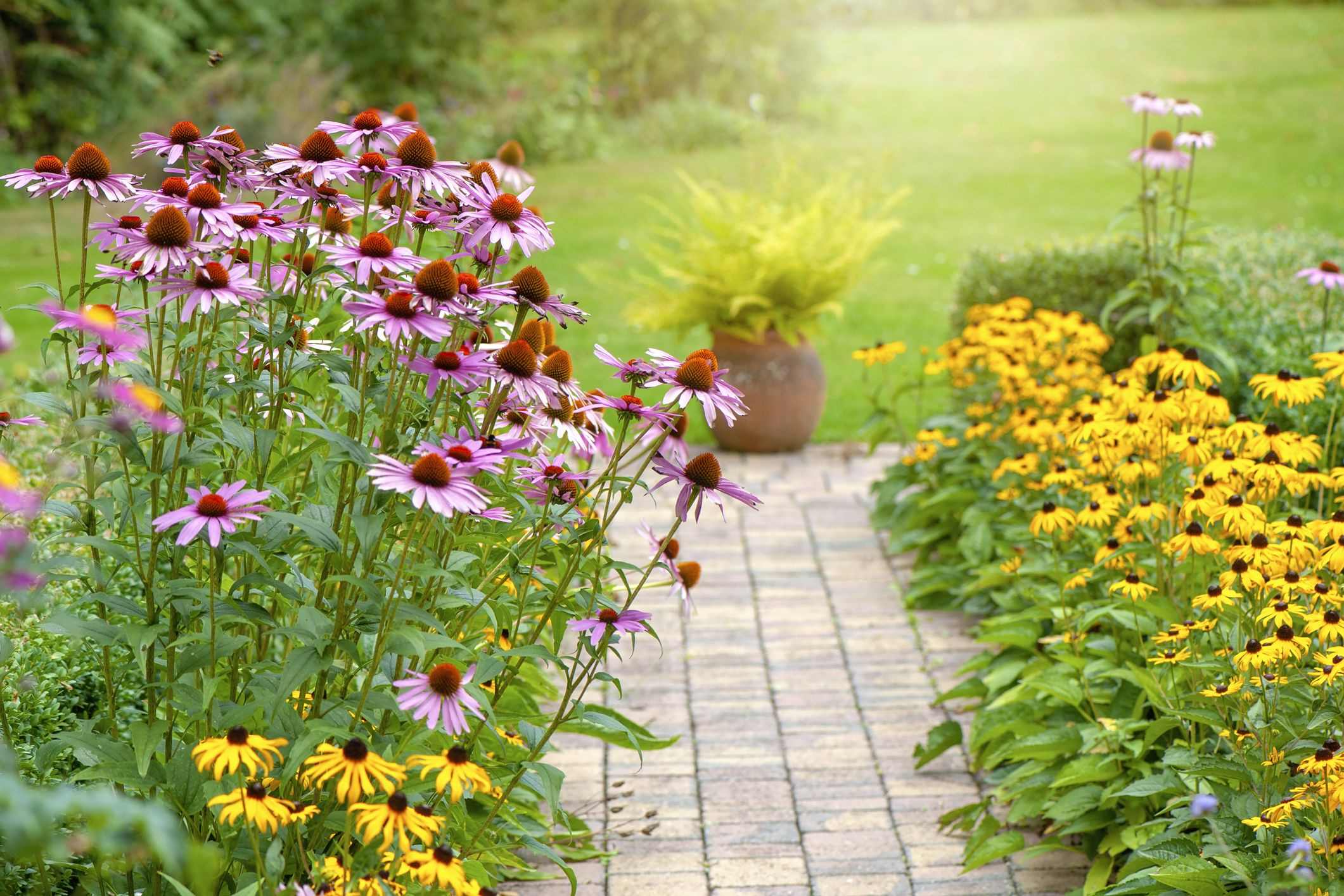Home>Gardening Techniques>Plant Care>How Long Do Perennials Live For
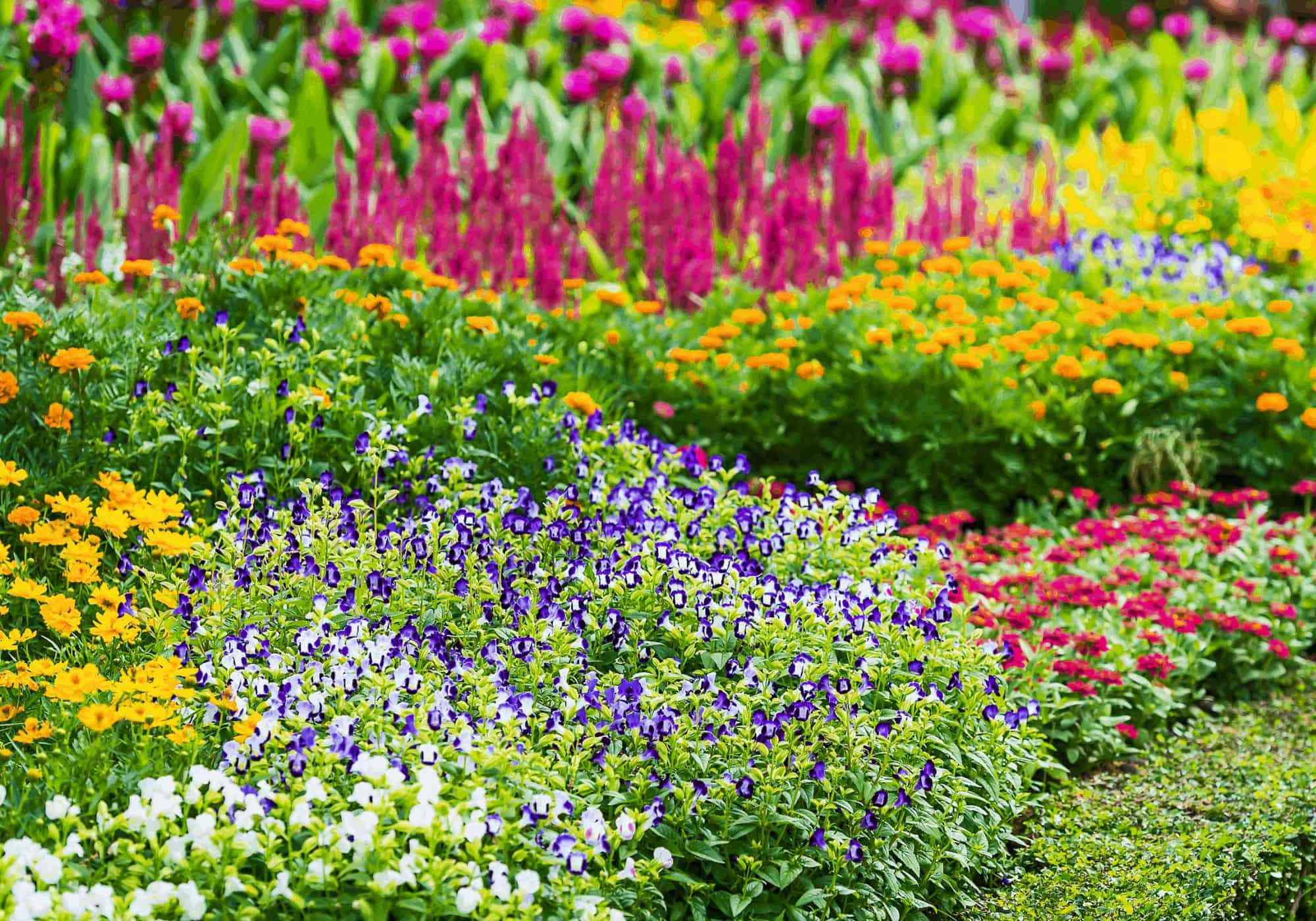

Plant Care
How Long Do Perennials Live For
Modified: January 22, 2024
Discover the lifespan of perennials and learn how to care for your plants to ensure they thrive. From watering to fertilizing, get expert tips on plant care.
(Many of the links in this article redirect to a specific reviewed product. Your purchase of these products through affiliate links helps to generate commission for Chicagolandgardening.com, at no extra cost. Learn more)
Table of Contents
Introduction
Welcome to the wonderful world of perennial plants! If you’re new to gardening or just looking to expand your plant collection, understanding the lifespan of perennials is essential. Unlike annual plants that complete their life cycle in a single year, perennials have the remarkable ability to regrow and thrive for multiple years.
Perennials encompass a vast array of plant species, ranging from flowering plants like roses and lilies to ornamental grasses and shrubs. These plants offer gardeners the opportunity to enjoy long-lasting beauty, as well as attract beneficial insects and wildlife to their outdoor spaces.
But how long do perennials actually live? The answer to this question is both fascinating and complex. While some perennials may persist for only a couple of years, others have the potential to live for decades or even centuries. The lifespan of a perennial plant is influenced by various factors, including environmental conditions, plant genetics, and proper maintenance.
In this article, we will delve deeper into the world of perennial plants and explore the factors that affect their lifespan. We will also discuss the common lifespan of perennial plants and provide some tips on how to extend their longevity.
Definition of Perennials
Before we dive into the lifespan of perennials, let’s understand what exactly constitutes a perennial plant. In simple terms, perennials are plants that have the ability to live for more than two years, regrowing and flowering each season without the need for replanting.
Unlike annual plants, which complete their life cycle within a single growing season, perennials have a longer lifespan. They have a dormant period during winter or other unfavorable conditions, and then reemerge when conditions become more favorable. This ability to withstand and survive different seasons is what sets perennials apart from other types of plants.
There are different types of perennial plants, each with its own distinct characteristics. Herbaceous perennials are non-woody plants that die back to the ground during winter and regrow from their roots in the following spring. Examples include hostas, daisies, and daylilies.
On the other hand, woody perennials, such as shrubs and trees, have hard, woody stems that persist year-round. While some woody perennials lose their leaves during winter, they do not die back entirely and continue to grow the following season.
Perennials come in a wide variety of shapes, sizes, and colors, making them a favorite choice for gardeners looking to create a diverse and visually appealing landscape. They can be used as border plants, ground covers, focal points, or even as cut flowers in bouquets.
It’s important to note that not all perennial plants have an indefinite lifespan. Some perennials may live for only a few years, while others can live for a much longer time, sometimes decades. The lifespan of a perennial plant depends on a multitude of factors, which we will explore in the following sections.
Factors Affecting Perennial Lifespan
The lifespan of perennial plants is influenced by various factors, both internal and external. Understanding these factors can help you create an environment that promotes the longevity and health of your perennials. Let’s take a closer look at the key factors that affect the lifespan of perennial plants:
- Environmental Conditions: The environment plays a crucial role in determining the lifespan of perennials. Factors such as temperature, humidity, rainfall, and sunlight exposure can directly impact the health and longevity of these plants. Some perennials thrive in full sun, while others prefer partial shade. Similarly, certain perennials are more tolerant of extreme temperatures, while others may require specific microclimates to thrive. Providing the right environmental conditions for your perennials is essential for their long-term survival.
- Plant Genetics: The genetic makeup of a perennial plant also affects its lifespan. Some plant species naturally have a shorter lifespan, while others have evolved to be longer-lived. Plant breeding and hybridization have led to the development of perennial varieties with extended lifespans and increased disease resistance. When selecting perennial plants for your garden, it’s worth considering the genetic traits that contribute to their longevity.
- Maintenance and Care: Proper maintenance and care are vital for the health and lifespan of perennials. Regular watering, appropriate fertilization, and timely pruning help promote strong growth and reduce the risk of diseases and pest infestations. Adequate spacing between plants ensures good air circulation and prevents overcrowding, which can lead to stress and decreased lifespan. Weed control is also essential, as competing weeds can deprive perennials of vital nutrients and resources.
By paying attention to these factors and providing the necessary care, you can significantly extend the lifespan of your perennial plants. However, it’s important to note that each perennial species is unique, and some plants may inherently have a shorter lifespan despite optimal care. In the next section, we will explore the typical lifespan of perennial plants and provide some examples of long-lived perennials.
Environmental Conditions
The environmental conditions in which perennial plants are grown play a significant role in their lifespan. Different perennials have specific environmental requirements, and providing the right conditions can greatly affect their health and longevity. Let’s explore some key environmental factors that influence the lifespan of perennial plants:
- Temperature: Temperature extremes can have a significant impact on the lifespan of perennials. Some perennial plants are adapted to thrive in colder climates and have built-in mechanisms to protect themselves from freezing temperatures. Others are more suited to warmer regions and may suffer damage or have a shorter lifespan in cold environments. It’s important to choose perennial plants that are well-suited to the temperature range of your region to ensure their long-term survival.
- Humidity: The humidity level in the environment can also affect the lifespan of perennials. Some plants, such as ferns and mosses, thrive in high-humidity environments, while others, like succulents, prefer drier conditions. Consistently high humidity can increase the risk of fungal diseases, while low humidity can lead to increased water stress. Maintaining the appropriate humidity level for your perennial plants is important for their overall health and longevity.
- Rainfall: The amount and frequency of rainfall impact the growth and lifespan of perennials. Some perennial plants, like cacti and succulents, are adapted to arid conditions and require minimal rainfall. Others, such as tropical plants, thrive in regions with consistent and abundant rainfall. Adequate water supply is crucial for the health and survival of perennials. If the natural rainfall in your area is insufficient, regular watering will be necessary to support their growth and extend their lifespan.
- Sunlight Exposure: Sunlight is a vital factor in a perennial’s lifespan and overall development. Some perennials, like sunflowers and roses, require full sun to thrive and reach their maximum lifespan. Others, such as shade-loving perennials like ferns and hostas, prefer partial shade conditions. Adequate sunlight exposure allows plants to produce energy through photosynthesis, promoting healthy growth and extending their lifespan. Understanding the light requirements of your perennial plants and providing the appropriate sun exposure will contribute to their overall health and longevity.
By understanding and providing the right environmental conditions for your perennial plants, you can create an optimal growing environment that extends their lifespan and ensures their success in your garden. Keep in mind that it’s crucial to consider the specific needs of each plant species and provide the appropriate care to help them thrive in their specific environmental conditions.
Plant Genetics
The genetics of a plant species play a significant role in determining the lifespan of perennial plants. Different species and cultivars have inherent genetic traits that influence their growth patterns, disease resistance, and overall longevity. Let’s delve into how plant genetics can affect the lifespan of perennials:
Inherent Lifespan Traits: Some perennial plants are naturally predisposed to have a shorter lifespan due to their genetic makeup. These plants may have evolved to complete their life cycle within a specific timeframe. For example, certain wildflowers are known for their short-lived nature, germinating, flowering, and setting seed within a single growing season before dying off. On the other hand, perennial plants that have been selectively bred or hybridized may have genetic traits that contribute to increased lifespan and overall longevity.
Disease Resistance: The genetic traits of perennial plants can also influence their resistance to diseases and pests. Some plant species have natural resistance to specific diseases, making them less susceptible to infections that could shorten their lifespan. Breeders and geneticists work to develop cultivars with improved disease resistance to protect plants from common threats. By selecting perennial varieties with strong genetic traits for disease resistance, gardeners can ensure longer lifespan and minimize the risk of plant loss due to diseases.
Growth Patterns: Plant genetics also determine the growth patterns of perennial plants, which can impact their lifespan. Some plants have vigorous growth habits, producing multiple shoots and expanding rapidly. These plants may exhibit a shorter lifespan as the energy expended on rapid growth can result in a shorter overall lifespan. On the other hand, perennial plants with slower, more controlled growth patterns may allocate energy more efficiently, leading to a longer lifespan. Understanding the growth patterns of perennial plants can help gardeners make informed decisions about planting and maintenance practices.
Genetic Variability: The genetic variability within a species can also lead to variations in the lifespan of perennial plants. Different individuals within a species may have slightly different genetic makeup, which can result in variations in growth rates, disease resistance, and overall lifespan. This genetic diversity within a species provides resilience and adaptability, allowing some plants to thrive and live longer in a range of environmental conditions.
It’s important to consider the genetic traits of perennial plants when selecting them for your garden. Choosing cultivars or species that have been bred for enhanced disease resistance and longevity can significantly impact the lifespan of your perennials. Additionally, providing optimal growing conditions and proper care will support the genetic potential of your plants and help them thrive for many years to come.
Maintenance and Care
Proper maintenance and care are essential factors for promoting the health and longevity of perennial plants. By providing the necessary care, you can help your perennials thrive and extend their lifespan. Let’s explore some key aspects of maintenance and care for perennial plants:
Watering: Adequate watering is crucial for the health and survival of perennial plants. The water requirements of perennials vary depending on the plant species, environmental conditions, and stage of growth. It’s important to water consistently and deeply, ensuring the root zone receives sufficient moisture. Avoid overwatering or allowing the plants to sit in waterlogged soil, as this can lead to root rot and other issues. Regularly check the soil moisture levels and adjust your watering practices accordingly to support healthy growth and extend the lifespan of your perennials.
Fertilization: Providing proper nutrients through fertilization is essential for the long-term health of perennials. Before applying any fertilizer, it’s important to understand the specific nutrient requirements of your perennial plants. Generally, a balanced, slow-release fertilizer can be applied in spring to provide the necessary nutrients throughout the growing season. Be careful not to overfertilize, as this can lead to excessive vegetative growth and reduced lifespan. Follow the recommended application rates and timing to ensure optimal nutrition for your perennials.
Pruning and Deadheading: Pruning is an important maintenance practice that helps shape and rejuvenate perennial plants. Removing dead or damaged growth, as well as regularly cutting back spent flowers (a process known as deadheading), promotes new growth and encourages prolonged flowering. Pruning also helps improve air circulation and reduces the risk of diseases. However, it’s essential to research each plant species to understand the appropriate pruning techniques and timing, as some perennials have specific pruning requirements.
Weed Control: Controlling weeds in the garden is crucial for the health and lifespan of perennial plants. Weeds compete with perennials for nutrients, water, and sunlight, leading to stunted growth and reduced lifespan. Regularly inspect your garden for weeds and employ appropriate weed control methods such as hand pulling, mulching, or using herbicides responsibly. By minimizing weed competition, you give your perennials the best chance to thrive and reach their full lifespan potential.
Protection from Pests and Diseases: Regular monitoring and proactive pest and disease management are vital for maintaining the health and longevity of perennial plants. Inspect your plants regularly for signs of pests, such as aphids or spider mites, and take appropriate measures to control infestations. Additionally, be vigilant for signs of diseases, such as powdery mildew or root rot, and promptly treat affected plants. Good garden hygiene, proper spacing, and adequate air circulation can help prevent the spread of diseases and ensure the long-term health of your perennials.
By following proper maintenance and care practices, you can provide the optimal conditions for your perennial plants to thrive. Each plant species may have specific care requirements, so it’s important to research and understand the needs of your specific perennials. By nurturing and caring for your perennials, you can extend their lifespan and enjoy their beauty year after year.
Common Lifespan of Perennial Plants
The lifespan of perennial plants can vary significantly depending on various factors such as species, genetics, and growing conditions. While some perennials may live for only a few years, others have the potential to thrive and grace your garden for decades. It’s important to note that these are general guidelines, and individual plants may have variations in lifespan. Here are some examples of the common lifespan of perennial plants:
Short-Lived Perennials: Certain perennial plants have a shorter lifespan, usually lasting between 2 to 5 years. These include biennials like hollyhocks and foxgloves, which complete their life cycle within two years. Some herbaceous perennials, such as delphiniums and lupines, may have a shorter lifespan due to their vigorous growth habit and susceptibility to disease. However, they often self-seed, ensuring the continued presence of their offspring in the garden.
Medium-Lived Perennials: Many perennial plants fall into the category of medium-lived, with a lifespan ranging from 5 to 10 years. This includes popular perennials like peonies, baptisias, and iris. These plants establish strong root systems and, with proper care, can provide years of beauty and enjoyment in the garden. Dividing and replanting these perennials every few years can rejuvenate them, ensuring the continuity of their presence in your garden.
Long-Lived Perennials: Some perennial plants can live for several decades or even centuries, making them cherished garden companions that can be passed down through generations. Examples of long-lived perennials include roses, ornamental grasses, and woody perennials like oak trees and yews. These resilient plants often have exceptional disease resistance and possess unique adaptability to different environmental conditions. With proper care, they can thrive for many years and become significant features in your garden landscape.
It’s important to remember that these are general guidelines, and the lifespan of a particular perennial plant can be influenced by factors such as genetics, environmental conditions, and overall care and maintenance. By providing optimal growing conditions, ensuring adequate care, and selecting long-lived perennial varieties, you can maximize the lifespan of your plants and enjoy their beauty for years to come.
Factors Extending Perennial Lifespan
While the lifespan of perennial plants can be influenced by various factors, there are certain measures you can take to extend their longevity and ensure they thrive in your garden for as long as possible. Here are some key factors that can contribute to extending the lifespan of perennial plants:
Proper Plant Selection: Choosing perennial plants that are well-suited to your growing conditions is essential. Consider factors such as hardiness zone, sunlight requirements, and soil type compatibility when selecting perennials. By planting species and cultivars that are naturally adapted to your climate and environmental conditions, you give them a head start in establishing a strong and healthy foundation for long-term growth.
Optimal Growing Conditions: Providing the right growing conditions can significantly impact the lifespan of perennial plants. Ensure they are planted in well-draining soil that is rich in organic matter. Proper soil fertility and pH levels are also important in promoting healthy growth and longevity. Adequate sunlight exposure, appropriate watering practices, and appropriate spacing are crucial for the health and overall success of your perennials.
Regular Maintenance: Regular maintenance and care play a crucial role in extending the lifespan of perennial plants. This includes practices such as regular watering, proper fertilization, as well as pruning and deadheading. Maintaining good garden hygiene, including cleaning up debris and removing diseased plant material, can help prevent the spread of diseases and pests. By staying vigilant and providing ongoing care, you can create an environment that promotes the optimal growth and lifespan of your perennials.
Division and Rejuvenation: Dividing and rejuvenating perennial plants is an effective technique to promote longevity. As perennials grow and mature, overcrowding can occur, leading to reduced vigor and increased susceptibility to diseases. By dividing clumps of perennials every few years, you not only rejuvenate the plants but also create additional space for new growth. Dividing perennials also allows you to propagate and share your favorite plant varieties with others, ensuring their continued presence in your garden and beyond.
Protection from Pests and Diseases: A proactive approach to pest and disease management can greatly extend the lifespan of your perennial plants. Regularly monitor for pests, such as aphids or caterpillars, and take appropriate measures to control infestations. Implement good sanitation practices and keep an eye out for signs of diseases, such as leaf spots or wilting. Promptly treating and managing these issues can prevent the spread of infections and provide your perennials with a healthier and longer lifespan.
By implementing these strategies and incorporating them into your gardening routine, you can create an environment that promotes the health and longevity of your perennial plants. While the lifespan of perennials can vary, these factors can help ensure that your plants thrive and bring beauty to your garden for many years to come.
Conclusion
Perennial plants are a fascinating and diverse group that brings beauty and longevity to gardens. Understanding the factors that affect their lifespan and implementing proper care techniques can greatly extend the life of these beloved plants. From selecting the right plant species for your specific climate to providing optimal environmental conditions and giving them the care and attention they need, you can ensure the health and longevity of your perennial garden.
Environmental conditions such as temperature, humidity, rainfall, and sunlight exposure play a significant role in the lifespan of perennials. By understanding the needs of your plants and providing the right growing conditions, you create an environment in which they can thrive and reach their full potential.
The genetic makeup of perennial plants also influences their lifespan. Some plant species are naturally short-lived, while others have genetic traits that contribute to increased longevity. By selecting perennial varieties bred for disease resistance and longevity, you can enjoy their presence in your garden for many years.
Proper maintenance and care are essential for the well-being of perennial plants. Regular watering, appropriate fertilization, pruning, and protection from pests and diseases are crucial for extending their lifespan. Dividing and rejuvenating perennials can also promote their longevity and maintain their vigor over time.
While the lifespan of perennial plants can vary, it’s important to remember that each plant is unique and may have specific requirements. By understanding these factors and investing in their care, you can ensure that your perennial plants not only survive but thrive for years to come.
So, if you’re ready to create a vibrant and long-lasting garden, start by choosing the right perennials, providing optimal growing conditions, and maintaining regular care and maintenance. With your efforts and attention, your perennial garden can become a living testament to the beauty and endurance of nature.
